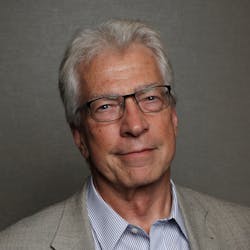
Light is an invaluable tool for very diverse applications, but none more so than sensing. And sensing with multiple wavelengths takes many forms—for example, tunable diode laser absorption spectroscopy (TDLAS) is being used around the world to monitor the atmosphere (see article). And Raman spectroscopy, when incorporating a well-chosen laser (see article), is a cutting-edge analytical technique applicable to many industries and markets. Hyperspectral imaging, a form of imaging spectroscopy, can reveal subtle color and texture differences in tissue samples and so serve the needs of the most sensitive biological pathology (see article).
Optical fiber, acting in a sensing rather than communications function, has been an important tool since the 1970s, and the development of the fiber Bragg grating (FBG) sensor has truly revolutionized sensing. As Alan Kersey from CytoVeris writes in his perspective on FBG sensing, over the past 30 years “there have been incredible strides in capability and innovative sensing formats developed and commercialized (see article).” Thanks to FBGs and other fiber manufacturing techniques, optical fiber is the tool of choice for numerous energy, transportation, security, and biomedical applications (see article).
As a communications tool, optical fiber has another claim to fame, as an essential tool enabling the Internet, along with new services such as datacom and new infrastructure such as data centers. The newest generation, known as hyperscale data centers, will need datacom components that are manufactured with ever-faster flexibility and speed (see article). And the successful automated manufacturing of these photonics components will require the sort of sensing techniques that photonics is ready to supply.

Conard Holton
Conard Holton has 25 years of science and technology editing and writing experience. He was formerly a staff member and consultant for government agencies such as the New York State Energy Research and Development Authority and the International Atomic Energy Agency, and engineering companies such as Bechtel. He joined Laser Focus World in 1997 as senior editor, becoming editor in chief of WDM Solutions, which he founded in 1999. In 2003 he joined Vision Systems Design as editor in chief, while continuing as contributing editor at Laser Focus World. Conard became editor in chief of Laser Focus World in August 2011, a role in which he served through August 2018. He then served as Editor at Large for Laser Focus World and Co-Chair of the Lasers & Photonics Marketplace Seminar from August 2018 through January 2022. He received his B.A. from the University of Pennsylvania, with additional studies at the Colorado School of Mines and Medill School of Journalism at Northwestern University.